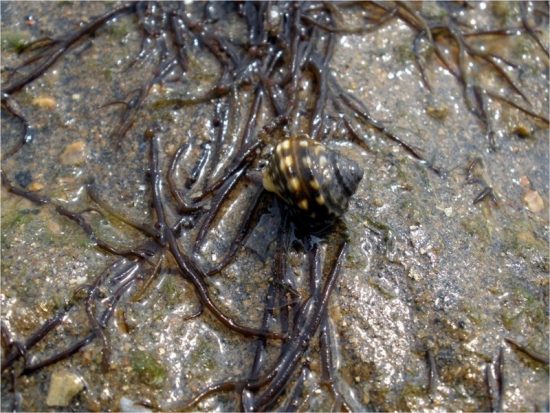


A
higher level of defence has been found within an invasive strain of seaweed
from Asia that has translocated to North America and Europe. Should this
migrant strain find its way back to its native home, cases of food poisoning
may become more frequent.
This
is the conclusion of a paper written by an international team of scientists
from the GEOMAR Helmholtz Centre for Ocean Research Kiel, published in the
journal Harmful Algae.
Newly
introduced species do their best to survive in their new environments.
Sometimes, they are lucky and find themselves in a place where they have few
predators. In such environments, they become invasive, spreading rapidly and
causing damage. Examples are the Chinese mitten crab, the naval ship worm or
the Japanese oyster, all of which have successfully invaded the North Sea and
Baltic Sea regions. Other species do not have it so easy and have to adapt by
strengthening their defensive capabilities; one such species is the seaweed Gracilaria
vermiculophylla from East Asia that has recently spread to Europe and North
America.
In
Asia, this algae is used as food and preferably eaten raw. Occasionally, the
presence of the prostaglandin hormone within its body have led to instances of
severe or fatal poisonings. Prostaglandin is useful as it protects the algae
against predators like snails and small crustaceans, which are sensitive
towards it.
In
recent decades, the algae has spread to Europe and North America. These strains
have a more pronounced defence (by possessing more prostaglandin) than the
native strains, and are thus better able to protect themselves against
predators.
According
to Dr Florian Weinberger, project leader and co-author of the study, twelve
selected populations of the algae in East Asia, Mexico and Europe were studied.
"That was a difficult task because we used living specimens that had to be
collected from all populations and to be transported alive to the cultivation
facility of GEOMAR. Only in this way we could compare the capacity of all the
specimens to produce deterrents under identical environmental conditions.”
The
results revealed that the non-native species contained more prostaglandin than
those from Asia – with the concentration being elevated by up to 390%. After
translocating to the new environments, Gracilaria vermiculophylla needed
to be better protected against predators, explaining the higher level of
prostaglandin, said lead author Mareike Hammann, who had wrote the paper as
part of her doctoral thesis.
 Mares
Mares 4th January 2016
4th January 2016 GEOMAR Helmholtz-Zentrum für Ozeanforschung Kiel, Wischhofstraße, Kiel, Germania
GEOMAR Helmholtz-Zentrum für Ozeanforschung Kiel, Wischhofstraße, Kiel, Germania